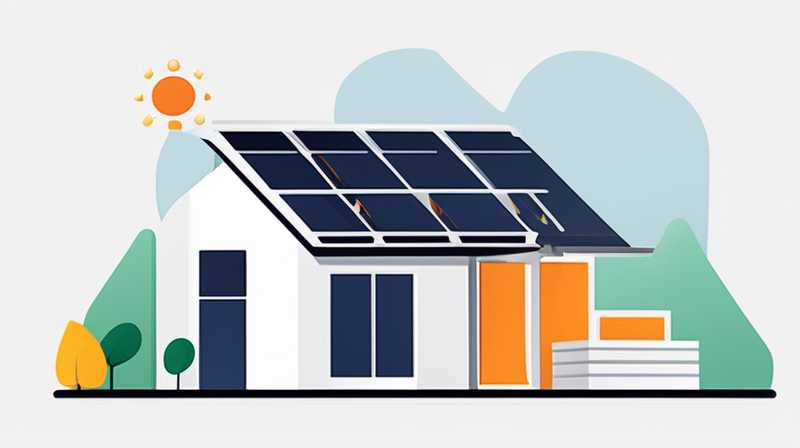
1. Recycling Methods, 2. Environmental Benefits, 3. Economic Impacts, 4. Challenges in Recycling
Recycling solar cells can be achieved through a variety of methods. 1. Mechanical Recycling, 2. Hydrometallurgical Process, 3. Pyrometallurgical Process, 4. Reuse of Components. The mechanical recycling process involves physically shredding the solar panels into smaller pieces for the recovery of valuable materials like silicon, metals, and glass. This method, while relatively simple, might not recover materials in their purest form and often requires extensive energy input.
The hydrometallurgical process uses aqueous solutions to leach valuable metals from the shredded materials, allowing for higher purity recovery. This method can extract precious metals like silver and copper effectively. Pyrometallurgical processes involve high-temperature treatment of materials to extract metals, leading to incineration of organic components. Each method provides unique advantages and challenges in recovering valuable materials from retired solar panels.
Environmental benefits play a crucial role in motivating recycling efforts. 1. Reducing Landfill Waste, 2. Conservation of Natural Resources, 3. Lowering Carbon Footprint, 4. Promoting Circular Economy. By recycling solar cells, we ensure that harmful materials do not end up in landfills, significantly reducing environmental pollution. Additionally, utilizing recovered materials conserves natural resources and diminishes the necessity for mining, subsequently lowering the ecological impact.
Economic impacts are another significant aspect of this topic. 1. Job Creation, 2. Material Value Recovery, 3. Cost Reduction in New Production, 4. Sustainability of the Industry. The recycling sector can create a variety of job opportunities in collection, processing, and logistics. Moreover, recovering valuable materials like silicon can lower material costs, making the production of new solar cells more economical. This shift toward recycling can also promote sustainability within the solar energy sector, encouraging responsible management of resources.
Challenges persist in the recycling of solar cells. 1. Lack of Standardized Processes, 2. Economic Viability, 3. Technological Barriers, 4. Public Awareness. There are currently no universally accepted protocols for recycling solar panels, which complicates the development of efficient systems. Furthermore, the economic viability of recycling operations depends heavily on market fluctuations in raw materials, making it a high-risk investment. Technological advancements are necessary to enhance the efficiency and effectiveness of recycling methods, while public awareness about the importance of solar cell recycling is still relatively low.
FAQs
WHAT ARE THE MOST COMMON MATERIALS IN SOLAR PANELS THAT CAN BE RECYCLED?
Typically, solar panels contain several recyclable materials. 1. Silicon, 2. Metals, 3. Glass are the primary components. Silicon, which comprises the core of most solar cells, represents an indispensable resource for re-manufacturing new panels. The metals used for contacts and connections, which include silver, copper, and aluminum, are also of high value. The glass that surrounds solar cells is often made from tempered glass, ideal for recycling. These materials can be retrieved through various recycling processes, ensuring that they can be repurposed without needing the extraction of virgin materials. The recycling of these components serves a dual purpose: it mitigates environmental waste and promotes a circular economy by reducing the demand for new raw materials.
ARE THERE ANY HEALTH RISKS ASSOCIATED WITH SOLAR PANEL RECYCLING?
Potential health risks are associated with the recycling of solar panels. 1. Exposure to Hazardous Materials, 2. Chemical Handling, 3. Airborne Particulates are concerns that must be addressed in recycling operations. Solar panels can contain hazardous materials such as cadmium and lead, which pose health risks if released into the environment or if workers are exposed without proper protective measures. Additionally, the chemicals used in the recycling processes may present risks if not handled correctly. Ensuring that recycling facilities follow strict environmental and occupational safety guidelines is essential for mitigating these risks. Efforts must be made to promote safe handling procedures, along with regular health screenings for workers involved in the recycling process.
HOW DOES RECYCLING SOLAR CELLS CONTRIBUTE TO SUSTAINABLE ENERGY DEVELOPMENT?
The recycling of solar cells significantly contributes to sustainable energy development in several ways. 1. Resource Conservation, 2. Decreased Environmental Impact, 3. Lifecycle Management, 4. Sustainable Business Practices. As the demand for renewable energy continues to grow, the need for solar cells increases; recycling aids in conserving finite resources necessary for their production. In addition, by recycling, we minimize the environmental impact of extracting fresh materials, mitigating damage to ecosystems caused by mining and refining. Effective lifecycle management of solar products promotes their sustainability and reduces waste. Overall, adopting circular economy principles through recycling initiatives enhances the viability and resilience of the renewable energy sector, making it more sustainable.
The intricate process of recycling solar cells requires a multifaceted approach, balancing economic viability, environmental sustainability, and technological advancements. Developing standardized recycling processes encourages efficient resource recovery and promotes responsible management of solar panel waste. Furthermore, raising public awareness about the importance of recycling enhances community engagement and drive towards sustainable practices. Through continuous innovation and the establishment of supportive regulations, it is possible to overcome existing challenges and build a thriving solar recycling industry. In turn, this will foster stronger ties between the renewable energy sector and circular economy principles, creating a path toward a greener, more sustainable future.
Original article by NenPower, If reposted, please credit the source: https://nenpower.com/blog/what-are-the-ways-to-recycle-solar-cells/


